
Cataract Surgery Recovery
Many adults who are over the age of fifty have a high risk of developing cataracts and may need surgery to remove the clouded lens of the eye and replace it with intraocular lens technology. If you and your refractive and LASIK surgeon in Orange County feel that now is a good time for you to manage your cataracts, you probably want to know everything that you should expect during your cataract surgery recovery period.

To help you get ready for this conversation you will have with your refractive and LASIK eye surgeon in Orange County, find a list of commonly asked questions and typical answers about the cataract surgery recovery process.
What Can I Do During Cataract Surgery Recovery?
The refractive and LASIK surgeon in Orange County informs us that there is very little alteration to your regular routine after cataract surgery, and you will be glad to hear that many patients are usually back to work the next day.
Nevertheless, it is vital to not rub the eye for the first week or two, and many surgeons tell their patients to wear a protective shield or goggles while sleeping.
Your refractive and LASIK surgeon in Orange County may prescribe you eye drops to be administered several times a day for the first few weeks. The reason for the drops is to keep the eye comfortable, prevent infection and inflammation, and help in the healing process. Also, you may find that you are more comfortable wearing dark glasses while outdoors for the first few weeks after surgery. The best to go for are polarized glasses with UV protection.
What Can’t I Do During Cataract Surgery Recovery?
Many eye surgeons strongly recommend to patients who have just had cataract surgery to avoid driving until you have been seen the day after surgery to assess whether the vision is clear enough to drive safely. Furthermore, do not rub, touch or put pressure on your eye.
If you are a bit of a gym rat, regular exercise is permitted by most surgeons, but you should avoid activities that would directly impact the eye, such as contact sports. These activities can put unnecessary stress on your eye while it is healing.
Although you can shower and bathe, you have to be cautious to not get any soap or water in the eye. You have to avoid going swimming in a pool, ocean or lake for a few weeks to prevent exposing your eye to dirty, contaminated, or over-chlorinated water.
Also, make it a point to avoid environments and activities that are dusty. Many eye surgeons advise their patients to avoid eye makeup for the first week. The reason being is that you want to avoid any particles, grime or other contaminants from entering your eye and causing irritation or infection.
How Will My Eyes Feel Like After Cataract Surgery?
During the first few days following a cataracts surgery, it is not unusual for your eye to be sensitive and slightly uncomfortable. Fortunately, besides the medicated eye drops your surgeon will prescribe, you should be able to handle any symptoms with an over-the-counter pain reliever.
If you find that your eye is itchy or sore for a few days, do not be alarmed since this is normal. Also, there might be some fluid discharge, but again this is common. Some patients have redness in their eyes and experience blurry vision in the first few days after surgery.
It is important to be aware that none of these symptoms should prevent you from doing your everyday routine nor should you be in excruciating pain while doing them. These symptoms are just a normal part of the healing process that happens during cataract surgery recovery. Nonetheless, if you do experience a lot of pain or your symptoms persist for more than a couple of weeks, get in touch with your eye doctor as soon as possible.
When Can I Return To Normal Activities?
Normally, your eye doctor will test and assess your vision to determine whether or not you are safe to drive after your cataract surgery. This is usually possible a few days after the procedure. Normally, the eye will be completely healed within eight weeks after the surgery. The good news is that many people are able to return to their normal routine in a matter of a few days.
Revolving around your particular requirements and surgery, your cataract surgeon may advise other or extra instructions and recommendations for your cataracts surgery recovery. Do your best to take your time during your pre-operative visit to read over every question, and any others you might have regarding your procedure and recovery with your refractive surgeon so you are knowledgable on what to expect during and after your cataracts surgery.
Follow These Tips For A Safe And Swift Cataract Surgery Recovery
- Do not drive on the first day after the surgery.
- Do not do any heavy lifting or vigorous activity for a few weeks.
- Right after the procedure, avoid bending over since this can put extra pressure on the eye.
- Try to avoid sneezing or vomiting immediately after surgery whenever possible, of course.
- Be cautious where you walk around after surgery, and avoid bumping into doors or other objects.
- To lower your chances of infection, avoid swimming or using a hot tub during the initial week of your cataract surgery recovery.
- Do not expose your eye to possible irritants such as dust, dirt, wind, and pollen within the first few weeks after surgery.
- Do not rub your eye after surgery.
Typically, you should be able to perform these activities within a few hours of your surgery:
- Computer work
- Brief TV watching
- Showering or bathing – but do not get water or soap in your eye
To achieve the best outcome from cataract surgery, make sure to follow your doctor’s specific instructions about how to safeguard your eye after your procedure.
If you want further information about the cataracts recovery process, give Excel Laser Vision Institute a call at + (818) 907-8606 today. Our expert team of highly trained refractive surgeons can guide you step by step on what to expect after your cataracts surgery.

Questions About Cataracts
If you are seeing things cloudier than usual, it may not be the weather. Unfortunately, it could be that you are developing cataracts, which LASIK doctors in Los Angeles make us aware that the lens in one of your eye, or both eyes, has become partly or totally cloudy.

Ophthalmologists at the LASIK eye center in Los Angeles such as Excel Laser Vision Institute tell us that the lens has an important role in helping us see clearly. When a person looks at something, light passes through the clear cover or cornea, which bends it and transmits it inside the eye to the lens. Then, the lens focuses the light onto the retina, which works similar to the film in a camera, but inside the eye. Afterward, the retina forwards the information to the brain.
For some of us, as we age, our lenses begin to alter and go from clear to cloudy which can stop the retina from receiving a sharp image, and the image you see becomes blurry. If this happens to you, you may be thinking if you are developing cataracts, and have a few questions about what you can do. Here are a few commonly asked questions and answers regarding this eye condition:
How Do You Know If You Have Cataracts?
LASIK doctors in Los Angeles say that if you are over 60 years of age and notice that your vision is beginning to get cloudy or fuzzy and colors seem faded, you may have cataracts.
Unfortunately, optometrists at the LASIK Los Angeles center like Excel Laser Vision Institute find that some patients start to experience these symptoms as early as in their 40s or 50s. Other alterations in vision to look out for include reduced night vision, halos around lights and double vision.
Cataracts are a normal part of the aging process, even though it can happen at any stage of a person’s life. Also, it is a common eye condition if you have diabetes, en eye injury, or use steroid eye drops or tablets. People are at higher risk for cataracts if they smoke, drink alcohol and have a poor diet. If you detect any changes in your vision or believe you have cataracts, schedule an appointment with an eye care professional.
What Tests Will My Eye Doctor Give Me?
Besides giving the patient a thorough eye exam, the ophthalmologist or optometrist will do the following:
- Give the patient a visual acuity test, which involves making him or her read an eye chart, to assess their distance and near vision and check if the vision issues can simply be fixed with glasses.
- Examine the front of the patient’s eyes, including the lens, using a special microscope called a slit lamp.
- Dilate the eyes using special drops to open the pupils to examine the inside of the eyes, including the lens (cataract), retina and optic nerve.
Do I Need Eye Surgery?
This all depends on how severe your cataracts is. Some cataracts remain small and may not have to be removed, but if they begin to hinder a person’s everyday activities, then your doctor may advise you to consider surgery.
Normally, a cataracts procedure is an outpatient operation. During the operation, the cataract surgeon, which is also known as a refractive surgeon, will get rid of the cloudy lens and replace it with an artificial intraocular lens (IOL) implant.
Traditional cataract surgery is very effective and there are new alternatives for cataract surgery that may be an excellent option to talk about with your eye surgeon.
What IOL Lens Options Are Available?
Fortunately, there are many types of IOL technologies at hand, which include standard or monofocal lenses, which can correct vision at one range of distance such as near, far or intermediate.
The most state-of-the-art multifocal or accommodative intraocular lenses can help you see near as well as far objects with a reduced, and perhaps even a total reduction, in the requirement for eyeglasses.
On the other hand, toric intraocular lenses can help correct astigmatism and distance vision, but you might still need glasses for reading purposes. Similar to LASIK, there is an IOL monovision option, which uses two different lenses to correct near vision in one eye and distance vision in the other. Have a chat about your vision goals with your eye surgeon to find out what the best IOL technology is to suit your lifestyle.
Can I Delay Getting Cataracts?
There are many simple lifestyle choices you can make to could help you delay the onset of cataracts. For instance, wear sunglasses with UV protection and a hat. Do not smoke. Consume a healthy diet that consists of a lot of fruit and vegetables since they are high in protective antioxidants such as Vitamin C, A, and E. Additionally, and this is worth repeating, regular visits to your eye doctor is vital for your vision and general health.
Will It Matter If I Had LASIK Eye Surgery Before?
No, it does not matter. As a matter of fact, cataract surgery can be performed after many laser vision correction procedures, such as LASIK, PRK, and SMILE.
It is good to know that LASIK and other laser vision correction techniques are performed on the cornea, which is the front surface of the eye. Cataract surgery involves replacing the lens of the eye which lies behind the pupil. The cornea and the lens are both responsible for keeping the eye focused, but they are different structures.
That being said, it is imperative to make your cataract surgeon aware of any previous eye surgeries. Also, it is useful to provide your eye surgeon with copies of your eye exams that were carried out before your LASIK or other laser vision correction procedure.
Don’t stress out if you can’t find your pre-LASIK records since cataract surgery can still be successfully performed without them. However, if you are interested in the latest vision-correcting intraocular lens (IOL) technologies available to cataracts patients, those records can provide your eye surgeon information that could help to determine the best focusing power of the IOL for your cataract surgery.
If you want more information about cataracts, cataracts surgery, and vision-correcting IOLs, do not wait any longer to give Excel Laser Vision Institute a call at (818) 907-8606, or fill out our contact form today!

Five Reasons Why Athletes Choose LASIK
Almost everybody knows that professional athletes are obliged to train their bodies to reach optimal levels of performance. As one LASIK eye doctor from Los Angeles points out, vision is indispensable to physical performance.

Therefore, when an athlete has inadequate vision, he or she must correct their vision so it always stays in place and can tolerate extreme conditions. It comes to no surprise that many athletes choose the LASIK eye center in Los Angeles like Excel Laser Vision Institute because of its safety and effectiveness.
What Happens When Athletes Wear Eyeglasses Or Contact Lenses During Sports?
No matter where a sport takes place, for instance, field, pitch, course, track or beach, the environment is a threat to athletes who suffer from vision problems.
They have to deal with dirt, sand, wind and rain, adjustments from natural to artificial lighting conditions, and coping with physical conditions, for example, exertion and collisions. This makes wearing eyeglasses and contacts very difficult indeed. Besides the problems with glasses and contacts, there are many reasons why athletes choose LASIK in Los Angeles.
Here is what can go wrong when athletes wear eyeglasses during sports:
- Glasses can break from an impact
- Block the athlete’s peripheral vision
- Fog over
- Catch glare from lights
- Intervene with protective equipment
Here is what can go wrong when athletes wear contacts during sports:
- Contacts can fall out
- Gather dust and dirt
- Irritate the eyes
Here Are Five Advantages For Athletes To Get LASIK
Enhanced Reaction Time – LASIK eye doctors in Los Angeles inform us that glasses and contacts can change a person’s depth perception. As a result, the athlete has less conviction and less time to react instantly to what is occurring on the field.
After LASIK surgery, the patient has better vision so they have improved reaction time and depth perception. In fact, an actual case study to this claim is that after Houston Rockets guard, Chris Paul, had LASIK surgery in 2016 he began to average 17.9 points per game, dominated the free throw line by knocking down 89 percent of his attempts, which has made him the NBA’s third-best three-point shooter in that season.
Improved Vision In Challenging Light – LASIK greatly augments the way the eyes manage contrast and low light. This results in better vision at night and an improved ability to deal with bright glare from the sun as well as stadium lights.
Generally speaking, LASIK allows patients to see contrast better under various types of light and against different backgrounds than glasses or contacts. Consider a baseball player such as Tampa Bay catcher Wilson Ramos, who had the LASIK procedure. He must be able to recognize a small, swift-moving ball against dirt, grass or grandstand and in various types of light both natural and artificial.
This is very challenging even for those who have the best vision. Now you can understand how relying on glasses or even contacts to play in these conditions is almost impossible, which is why it is easy to understand Ramos’ choice to have LASIK surgery.
Ramos has openly credited LASIK for providing him the vision to precisely see and react to pitches and his 2016 stats improved significantly with a career-high batting average of .307 for the season. He also got a place on the National League All-Star line up, which isn’t too shabby at all!
Faster Recovery – Advancing improving techniques signifies that LASIK recovery is measured in days, and not in weeks. Many people can get back to their normal lives and routine in just two days!
Normally, athletes have a demanding physical routine which may require them to take a week or two off from training. Overseeing the recovery period, including the post-operative regime of medicated drops, oral antibiotics, artificial tears, and eye protection is usually easy to continue during the off-season.
No Hassles In Any Weather Conditions – No matter the weather conditions – wind, rain, snow, sun, dust and mud, sports are played. After you have had LASIK, you will notice that your eyes can tolerate extreme environments better.
If you are an athlete that has to wear helmets or other gear, sweats profusely or plays outdoors, you know it can be impossible to wear glasses. Not to mention contact lenses are not very reliable in the wind, dust, or contact situations.
View Objects At The Correct Scale – When shortsightedness is corrected using glasses or contacts, oftentimes these individuals see objects a lot smaller. LASIK helps to bring back everything on the playing field to the proper size.
LASIK gives individuals “normal vision” and not the minification that usually happens with myopic glasses. Many professional golfers have said that LASIK has enhanced their putting abilities because the hole seems larger to them now.
Which Famous Athletes Had LASIK?
Here are a few famous athletes you might know or even idolize, who have had LASIK.
LeBron James: Basketball player and 3-time NBA Champion
Aaron Baddeley: Golfer and 4-time PGA Tour Champion
Ivan Lendl: Tennis player and 8-time Grand Slam Winner
Tom Dolan: Swimmer and 2-time Olympic Gold Medalist
What Athletes Should Know About LASIK?
Since various types of sports have different requirements, athletes should be aware of the options available when it comes to laser vision correction treatment. At the moment, LASIK is the most popular laser vision correction procedure because it is a safe and effective procedure, which supports optimal vision with a swift recovery time in a two-step process.
The procedure involves the eye surgeon to create a flap in the cornea, which is today done with an advanced and very accurate femtosecond laser, to reveal the inner cornea where the eye surgeon performs vision correction. When the flap is replaced, the procedure is complete. Typically patients feel an immediate enhancement in their vision quality. That improvement strengthens during the healing process.
LASIK is the most popular laser vision correction surgery for professional athletes, and even average people who would rather watch their heroes play can take advantage of the safe and effective results LASIK surgery can provide. If you want further information about LASIK eye surgery, give Excel Laser Vision Institute a call at + (818) 907-8606 today.
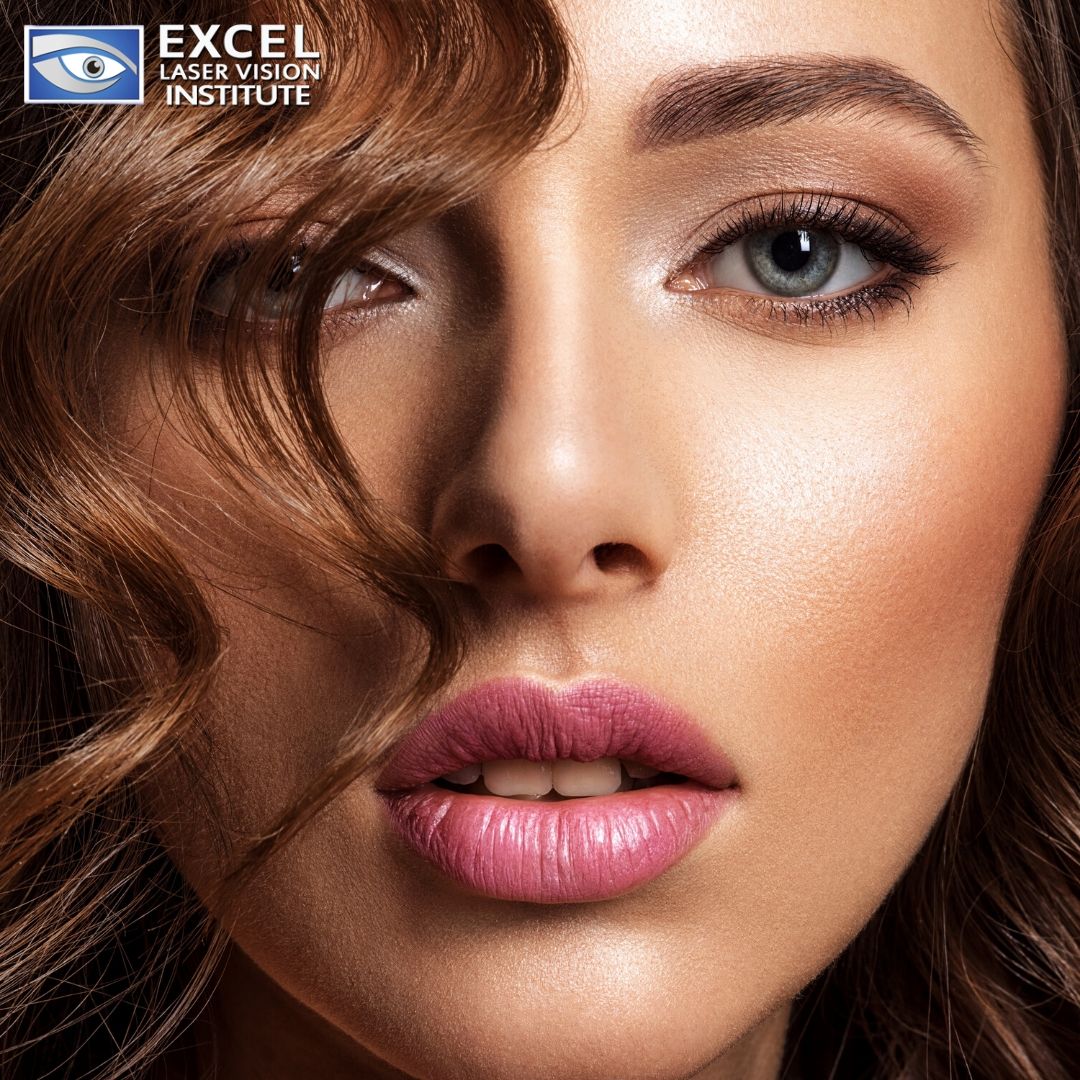
Cataract Surgery With Vision-Correcting IOLs
Generally, as we age, we are more susceptible to eye degenerating conditions such as cataracts. As the refractive and LASIK surgeon in Orange County explains, cataract surgery involves the removal of the clouded natural lens, which is replaced with an artificial plastic lens.
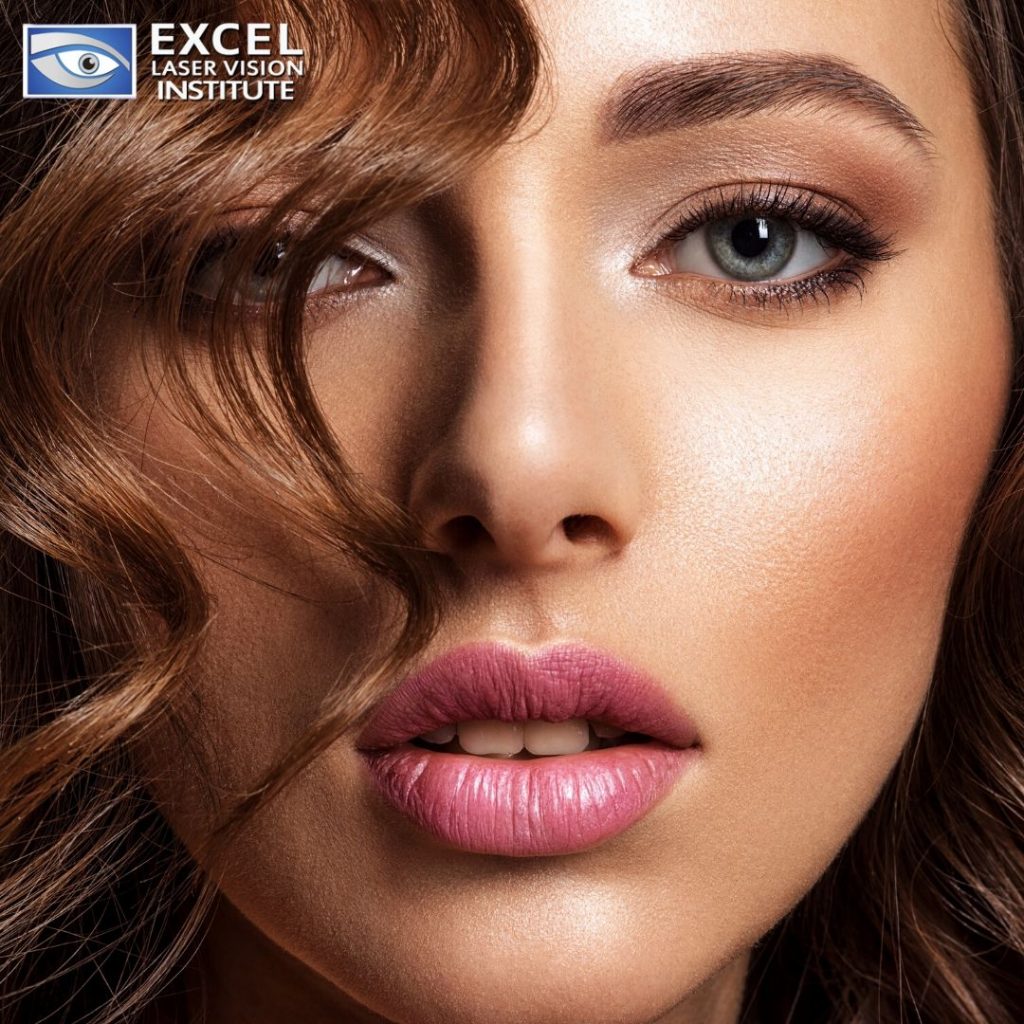
Nowadays, lens technology provides the means for cataract patients to not only replace their clouded lens with a clear plastic lens, but also correct other vision problems such as nearsightedness, farsightedness, and astigmatism as well.
A refractive and LASIK surgeon in Orange County can help you customize the procedure to your personal vision requirements using modern state-of-the-art intraocular technologies. Typically, the process of cataract surgery is the same for every patient in the following ways:
- Similar to all major surgical procedures which take place through the refractive and LASIK surgeon in Orange County, the operating room is a sterile environment.
- Most lens replacement procedures are performed under local, topical anesthesia. The eye surgeon uses eye drops to numb the surface of the eye. The patient is awake for the procedure, but their vision will be very blurry.
- Further medication may be given to the patient to keep him or her calm. Also, the patient may be placed on an IV of fluids and a heart rate monitor.
- A drape is placed on the patient’s face so that only the eye to be operated on is visible.
- Many patients do not feel pain during the procedure, which normally takes 15 to 30 minutes.
- The refractive and LASIK surgeon in Orange County makes a small incision in the cornea with a handheld blade or a laser machine. In many instances, the incision is so small that stitches are not needed.
- A small ultrasonic probe, a laser or a mix of both is used to break up and get rid of the damaged lens. The new lens is then placed where the old cloudy lens was situated in the eye.
- When the surgery is complete, the surgeon will cover the eye with a bandage or shield to protect it as it heals.
- After a brief recovery period, the doctor will allow you to go home with your designated driver.
How To Choose the Best Implant For Cataract Surgery?
When considering cataract surgery, your doctor will discuss with you the most suitable implant to replace your cloudy eye lens.
Normally, eye surgeons use intraocular lenses (IOLs), which are medical devices that are implanted inside the eye to replace the eye’s natural lenses when it is taken out during cataract surgery. IOLs are also often used for a refractive lens exchange procedure, which is a type of vision correction surgery.
Before eye surgeons had access to intraocular lenses, if a patient had cataracts removed, he or she would have to wear very thick eyeglasses or special contact lenses to see clearly after cataract surgery, since no device could be implanted into the eye to substitute the focusing power of the natural lens at that time.
Fortunately, today there is a vast selection of premium IOLs to choose from. The best intraocular lens for a patient depends on many different factors, including lifestyle and their particular visual needs.
Here is a general outline of premium IOLs that are currently FDA approved for use by cataract surgeons in the United States. These are thought to be premium intraocular lenses since they possess advanced features apart from those found in basic single vision IOLs that are covered by certain types of health insurance.
Aspheric IOLs
Normally, intraocular lenses have a spherical optical design, which consists of the front surface being evenly curved from the center of the lens to its periphery. Although a spherical IOL is very easy to produce, this design does not mimic the shape of the natural lens inside the eye, which changes in curvature from the center to periphery. Essentially, the eye’s natural lens is aspheric, not spherical.
Premium aspheric IOLs are a better match in shape and optical quality of the eye’s natural lens, so they provide sharper vision particularly in low light conditions and for individuals with large pupils.
Toric IOLs
Toric IOLs are premium intraocular lenses that eye surgeons use to correct astigmatism, nearsightedness, and farsightedness. Similar to toric soft contact lenses, toric IOLs are capable of correcting astigmatism since they have various powers in different meridians of the lens.
Also, they have alignment markings on the peripheral part of the lens that helps the surgeon to change the orientation of the IOL inside the eye for the best astigmatism correction.
Accommodating IOLs
Traditional spherical IOLs are mono-focal lenses, which are designed to support clear vision at a single focal point. For instance, at a distance for good driving vision. Ordinarily, with traditional IOLs, a person has to wear eyeglasses or contact lenses to use a computer, read or perform any other close up tasks at arm’s length.
Accommodating IOLs are premium intraocular lenses that increase the range of clear vision with an aspheric design as well as flexible “haptics” which are the supporting legs that hold the IOL in place inside the eye.
Multifocal IOLs
Multifocal IOLs are a type of presbyopia-correcting IOLs that lower the patient’s need for reading glasses or computer glasses after cataract surgery.
Similar to multifocal contact lenses, multifocal IOLs contain added magnification in various parts of the lens to increase the range of vision so a patient can see objects clearly at all distances without glasses or contact lenses.
Monovision
Another option for accommodating and multifocal IOLs for correcting presbyopia is monovision. Monovision IOL does not exist since monovision is the technique of completely correcting the refractive error of one eye and forcing the other eye to become mildly nearsighted.
In this situation, the completely corrected eye sees distant objects clearly, but cannot see very well up close without the use of glasses, while the mildly nearsighted eye sees very well up close without glasses, but not so strongly far away.
If you want more information about cataract surgery with vision-correcting IOLs, do not hesitate to give Excel Laser Vision Institute a call at (818) 907-8606, or fill out our contact form today!
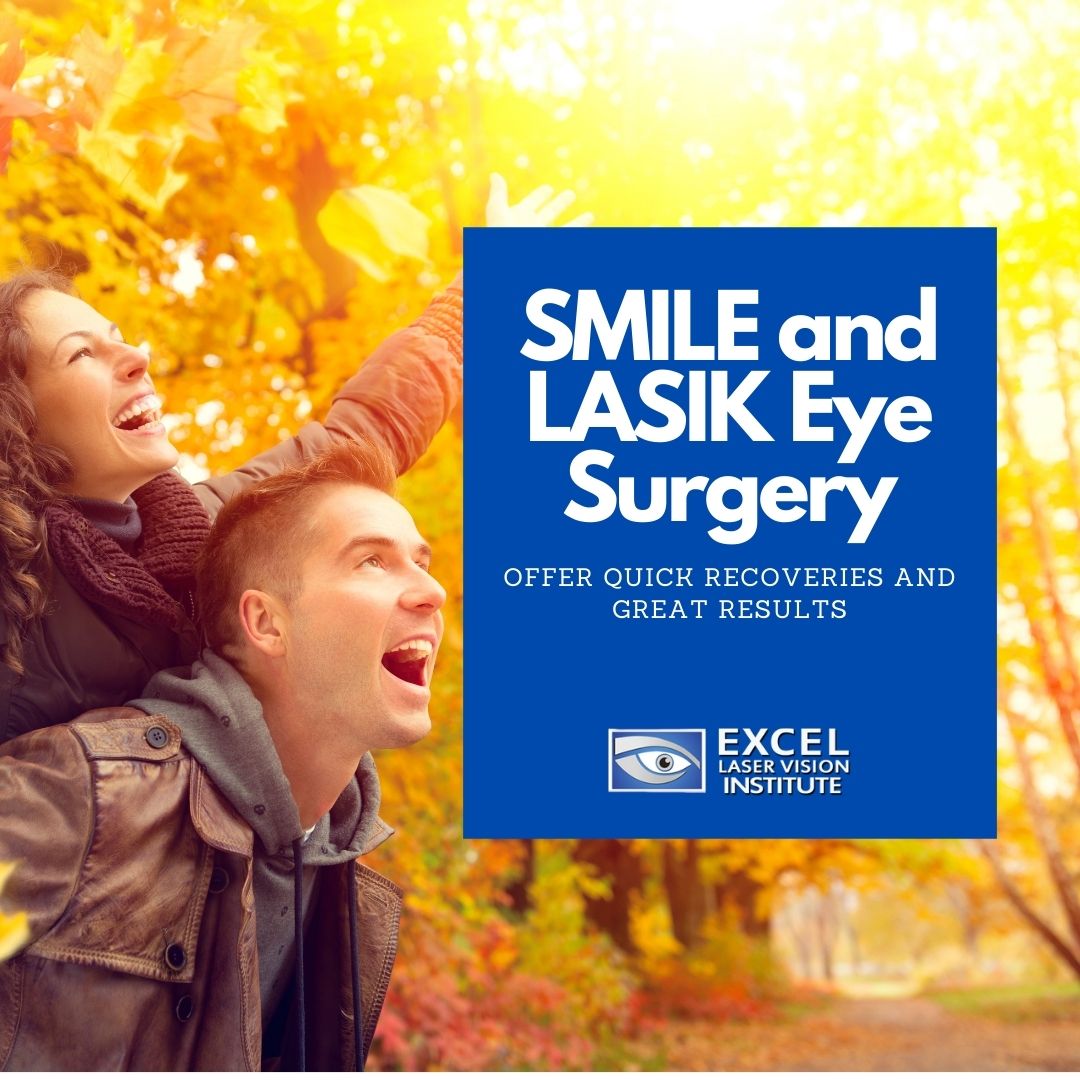
How To Recover From ReLEx SMILE Surgery
If you haven’t been living under a rock, then you have probably heard of the innovative form of laser vision correction called ReLEx SMILE. It is a popular laser eye surgery at at LASIK centers in Los Angeles like Excel Laser Vision Institute because it combines many of the advantages of other types of laser eye surgery all into one. Patients love SMILE and LASIK eye surgery because of their ability to correct refractive errors. SMILE, in particular, is considered to be one of the most advanced laser vision procedures in the world.

What Is A ReLEx SMILE Procedure?
A ReLEx SMILE procedure is a minimally invasive treatment to correct short-sightedness. Besides using ReLEx SMILE to treat short-sighted patients, LASIK surgeons in Los Angeles use this procedure to treat individuals that have high prescriptions, drier eyes, contact intolerance, and/or thinner corneas. In a nutshell, the revolutionary technology that is involved in a ReLEx SMILE procedure transforms Laser Eye Surgery into a keyhole procedure.
ReLEx SMILE, or sometimes just referred to as SMILE at LASIK eye center in Los Angeles, stands for Small Incision Lenticule Extraction. It is a less invasive method of correcting vision issues such as severe myopic that was previously only treatable with standard LASIK Laser Eye Surgery.
The procedure involves the eye surgeon to place eye anesthetic drops into the patient’s eyes to completely numb them. At the LASIK Los Angeles clinic like Excel Laser Vision Institute, a state-of-the-art Carl Zeiss VisuMax laser distributes a series of precise pulses in the center of the cornea with exceptional 3D placement accuracy. These pulses create bubbles that are less than 1/100th of the width of a human hair. Also, it outlines the tissue that has to be removed to efficiently alter the shape of the cornea. Then the laser creates a tiny connecting tunnel in which the LASIK surgeon in Los Angeles extracts this tissue.
What Are The Side Effects Of ReLEx SMILE?
Right after a ReLEx SMILE or LASIK procedure, the patient’s eye might feel a bit different than normal. The eyes may seem itchy, watery, and uncomfortable when you try to open them. However, this sensation only lasts about 24 hours until your eyes completely heal.
What Medications Will The Eye Surgeon Prescribe?
After a ReLEx SMILE procedure, the surgeon will prescribe antibiotic eye drops which will help to prevent infection. These eye drops should be administered as directed for the entire course of recovery, which is normally about 10 days.
How Fast Is The Recovery Process?
The great thing about a ReLEx SMILE or LASIK surgery recovery is that the physical healing process happens a lot faster than you might think. The advantage of this swift healing time means that you can get back to your normal activities such as swimming and outdoor sports after a few days of your ReLEx SMILE or LASIK eye surgery.
Also, you can get back to binge-watching your favorite Netflix shows, using your computer or laptop, and reading as you usually do within a day or two. However, your doctor will probably advise you to take regular screen breaks to prevent eye fatigue and to stop the eyes from drying out.
What About Driving After A ReLEx SMILE Procedure?
This is a major concern for many patients after any laser vision correction. In regards to a ReLEx SMILE procedure, many patients can get back to driving within 72 hours of their procedure. However, our competent staff at LASIK Los Angeles will be able to provide you with more specific advice relating to driving after a ReLEx SMILE procedure and this should be followed meticulously.
Is ReLEx Suitable For Everbody?
A surgeon will usually recommend the ReLEx SMILE procedure for short-sighted patients, especially those who have been informed that they were not suitable candidates for Laser Eye Surgery because of thin corneas, dry eyes, or contact lens intolerance.
What’s The Difference Between ReLEx And LASIK?
ReLEx is the start of a new era in refractive surgery, based on its significant benefits in the patient’s comfort. Since there is no requirement to pass from one instrument to another, as is the case in a LASIK procedure, the patient does not have to change their position. This is the fundamental reason why the procedure only takes a few minutes.
What Are The Benefits Of SMILE?
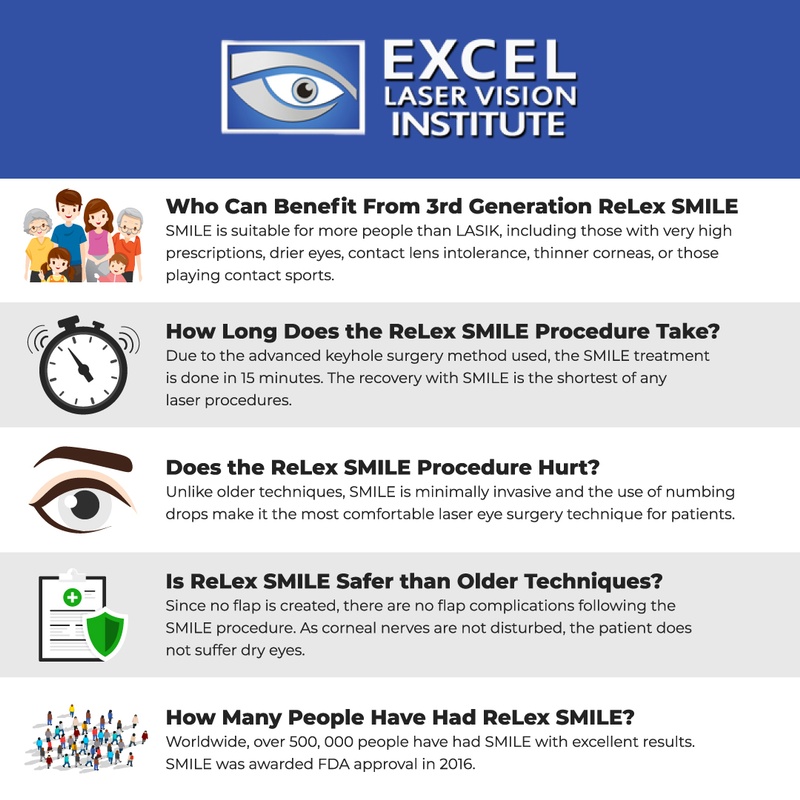
Studies have shown that patients who receive SMILE or LASIK in Orange County can achieve the exact same correction of nearsightedness and visual acuity. This means that SMILE offers the same benefits as LASIK without having to create a LASIK-style corneal flap.
In one study of 328 participants who underwent the SMILE procedure, all but only one had uncorrected visual acuity (UCVA) of 20/40 or better following surgery, and eighty-eight had CVA of 20/20 or better.
Additionally, it seems there may be less risk of dry eye symptoms following a SMILE procedure, compared with LASIK. There could be various reasons for this, including the fact that the SMILE procedure occurs within the cornea without a large corneal flap, fewer corneal nerves are disturbed by the procedure.
The very tiny SMILE incision can give the cornea more biomechanical stability after SMILE, compared with its capability to keep shape after LASIK.
Ultimately, for the correction of immense amounts of nearsightedness, with LASIK there is more of a possibility of a patient requiring an enhancement procedure to achieve the clarity of vision wanted without glasses.
There seems to be less of a risk of requiring an extra procedure after SMILE for correction of high amounts of myopia, which could be because there is less dehydration of the cornea that happens during the SMILE procedure.
In summary, SMILE is an innovative eye correction surgery that provides these advantages:
- There is no risk of corneal displacement since a corneal flap does not form.
- A patient can improve their optics without touching the central part of the cornea, which plays a vital role in vision.
- A small incision that is only a few millimeters in length is more than 80% smaller than the incision needed for LASIK methods.
- The nerves that control the formation of tears are completely preserved, so the risk of developing dryness in the eye is minimal.
- Both the laser procedure and recovery are painless.
If you want more information about getting ReLEx SMILE or LASIK in Los Angeles, do not hesitate to give Excel Laser Vision Institute a call at (818) 907-8606, or fill out our contact form today!
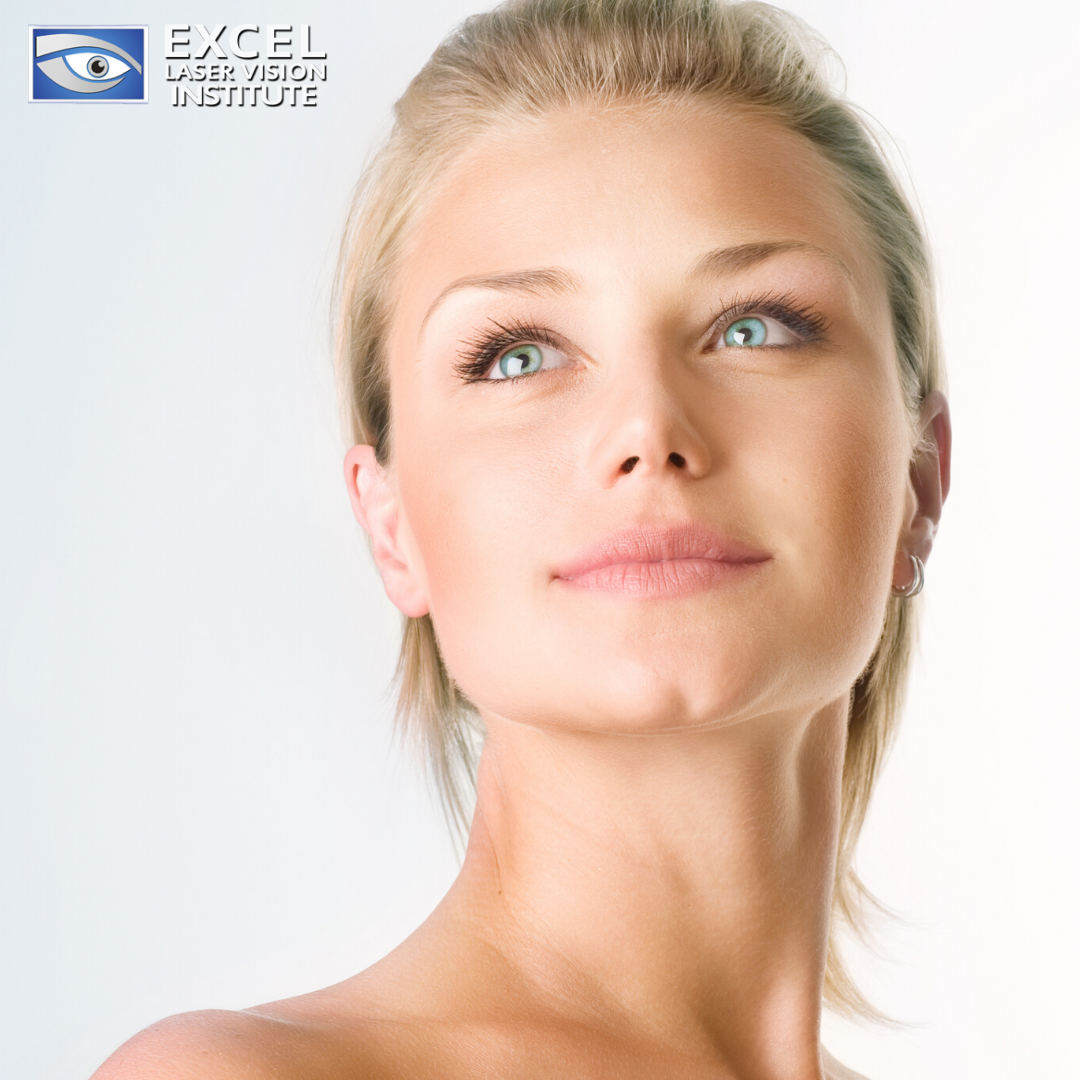
Six Questions To Ask about Cataracts
If you feel that everything you look at has a cloudy effect, it probably isn’t the weather doing that. A Refractive and LASIK surgeon in Orange County like Dr. Moosa tells us that it could be that you are developing cataracts. This is an eye condition that involves the lens in one of your eyes or both of your eyes, has become partly or completely cloudy.
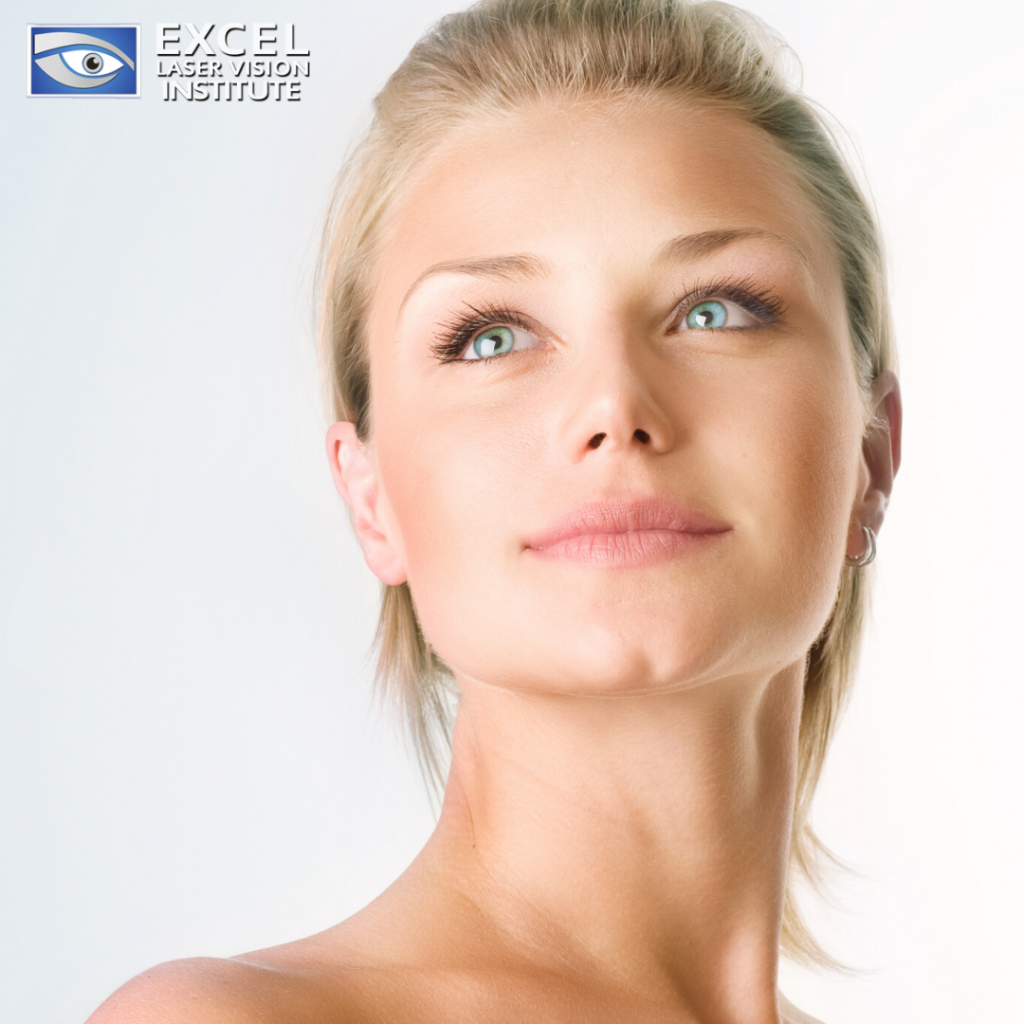
The eyes’ lens plays an important role in helping us see acutely. When a person looks at something, light passes through the clear cover or cornea, which bends it and transmit it inside the eye to the lens. Then, the lens focuses the light onto the retina, which performs very similar to the film in a camera, inside the eye. Afterward, the retina delivers the information to the brain.
According to the refractive and LASIK Orange County surgeon, there is going to be a time in a person’s life that our lenses will begin to change and go from clear to cloudy. This will stop the retina from receiving a sharp image, and the image that the person affected will be a blurry one.
If this happens to you, you might be asking yourself if you are developing cataracts, and you might have some questions about what you can do. Here are a few answers to questions you probably want to know about concerning this eye condition.
How Do You Know You Have Cataracts?
As mentioned before, patients that visit the refractive and LASIK surgeon in Orange County that have a clouding of a normally clear lens of the eye, have a cataract. When a person has cataracts, trying to see through a cloudy lens, is kind of like looking through a frosty or fogged-up window. When you are experiencing cloudy vision caused by cataracts you may find that you have a difficult time reading, driving a car (particularly at night) or see the expression on people’s faces.
A lot of times, cataracts develop gradually and does not disturb a person’s eyesight within its early stages. However, over time cataracts will ultimately obstruct your vision.
Initially, more powerful lighting and eyeglasses can help anyone deal with cataracts. Although, if the impaired vision interferes with a person’s usual activities, an eye surgeon may recommend surgery. Fortunately, cataract surgery by the refractrive and LASIK surgeon in Orange County is a safe and effective procedure.
When a person reaches the age of 60 and over, they may realize that their vision is getting cloudy, fuzzy and colors look faded. This may mean you have cataracts. Some people begin to experience these symptoms as early as in their 40s or 50s.
Other transformations in vision to look out for are reduced night vision, halos around lights and double vision. Experiencing cataracts is part of the normal aging process, even though it can happen at any stage in life. Also, it is a very common eye condition for people who are suffering from diabetes, an eye injury, or use steroid eye drops or tablets. Individuals who smoke, consume alcohol or have a poor diet are also at a very high risk of developing cataracts. If you see any changes in your vision or #belive you have cataracts, book an appointment with your ophthalmologist immediately.
What Tests Will My Ophthalmologist Give Me?
Besides giving you a complete eye exam, your ophthalmologist will do the following:
- Give you a visual acuity test, which is reading an eye chart, to assess your distance and near vision and ss if you just need a change of glasses.
- Examine the front of your eyes, together with your lens, using a specific microscope called a slit lamp.
- Your eye doctor will dilate your eyes using special drops to open your pupils to examine the inside of your eyes, including the lens (cataract), retina and optic nerve.
Do I Need Surgery?
You could be lucky and your cataracts could stay small and may not have to be removed. However, if they begin to interfere with your everyday activities, then you may want to think about getting surgery.
Cataract surgery is usually an outpatient operation. During the procedure, your cataract surgeon (also called a refractive surgeon) will remove the cloudy lens and replace it with an artificial intraocular lens (IOL)implant. Ordinarily, cataract surgery is very effective and there is a new type of cataract surgery that may be a good alternative to discuss with your eye surgeon.
What IOL Lens Options Are Available?
There are many several types of IOL technology available, including standard or mono-focal lenses, which can correct vision at one range of distance (near, far or intermediate). The most recent multifocal or accommodating intraocular lenses can help you see both near and far objects with a reduced or even total reduction in the requirement for glasses.
Toric intraocular lenses correct astigmatism and distance vision, but you may require glasses for reading. Similar to LASIK, there is an IOL monovision option, which utilizes two different lenses to correct near vision in one eye and distance vision in the other.
What Can I Do To Delay Cataracts?
If you are afraid of getting cataracts or it runs in the family, there are various simple lifestyle choices you can make that could help you delay getting cataracts. For instance, wear sunglasses with UV protection and a hat, don’t smoke, eat a healthy diet that consists of lots of fruit and vegetables since they are high in protective antioxidants such as Vitamin C, A and E. Additionally, you should never skip out on your regular visits to your eye doctor since it is crucial for your general and vision health.
Does It Matter If I Had Eye Surgery In The Past?
Normally, no. As a matter of fact, cataract surgery can be performed after most laser vision correction procedures such as LASIK, PRK, and SMILE. This is because LASIK and other laser vision correction techniques are done on the cornea which is the front surface of the eye. Whereas cataract surgery changes the lens of the eye which sits behind the pupil. The eye’s cornea and lens are needed to help your eye focus, but they have different structures.
That being said, it is important to let your cataract surgeon know you have had previous eye surgery. Also, it is helpful if you find an experienced and well-trained eye refractive surgeon such as Dr. Ferzaad Moosa to give you the advice and care that you need. If you have more questions about cataracts, give Excel Laser Vision Institute a call at + (818) 907-8606 to arrange an appointment today.

How Long is the LASIK Recovery Time
The many cases, the improved vision you receive from the LASIK surgeon in Orange County is permanent. However, in some circumstances, normally because of the changes that happen in the lens inside the eye, with or without LASIK surgery, some nearsightedness, farsightedness and/or astigmatism can come back over time, resulting in blurry vision. If this type of regression happens and becomes aggravating, a follow-up procedure known as a LASIK enhancement normally can be performed to bring back clear vision.

How Long Does LASIK Last?
There is an incessant myth that people believe that LASIK is not permanent and that it just lasts a couple of years. However, a LASIK Orange County surgeon like Dr. Moosa can assure you that LASIK permanently corrects the vision prescription. The procedure can correct nearsightedness, farsightedness or astigmatism. The procedure does this by using a laser to reshape the cornea, removing the imperfections of the cornea that cause nearsightedness, farsightedness and/or astigmatism.
Consequently, since these imperfections disappear with the procedure, the fact that a patient’s eyes sometimes deteriorate following LASIK does not really make any sense. Still, a patient’s myopia (nearsightedness) or hyperopia (farsightedness) actually improves. Just like all living things, the eyes can evolve over the course of a person’s lifetime.
As the LASIK surgeon in Orange County points out, it would not be reasonable to think that if you purchase a pair of glasses and have them last your whole lifetime. A person’s eyes can change, but they will never revert to being as poor as they were before a LASIK procedure.
Many eye surgeons believe the foundation for this myth is the truth about presbyopia. LASIK does not prevent long-sightedness caused by loss of elasticity of the lens of the eye, occurring typically in middle and old age (presbyopia), but it can happen to everyone. Normally, presbyopia starts when you are about 40 years of age.
This is because of the lens of the eye, not the cornea that was reshaped with LASIK, but the lens behind the cornea loses its ability to focus on objects close-by. Despite being born with good vision in both eyes, you will probably need reading glasses in your mid-forties. This is the same situation for people who select to have their vision corrected with a procedure such as LASIK. Fundamentally, LASIK does not make presbyopia worse or brings it on any sooner.
What Is An Enhancement? Why Do Some People Need This?
In a nutshell, a LASIK enhancement is a follow-up LASIK procedure that occasionally has to be performed if the patient’s original vision correction surgery is inadequate, or if a person’s vision alters greatly over time. Modern LASIK has an enhancement rate of 1 to 2 percent in the first year and then around one percent a year after that since the patient’s eyes can change over time. Therefore, for instance, ten years after LASIK, about 10 percent of patients may need an enhancement procedure to keep their first-rate vision. Patients who have refraction that is not constant before a LASIK procedure have an increased risk of requiring enhancements. This is the reason why a LASIK surgeon wants to know whether your glasses have changed over the last couple of years before the procedure.
On a positive note, laser vision correction can oftentimes be repeated after a complete evaluation to make sure the patient is still a suitable candidate. Some surgeons charge an enhancement fee, while other surgeons perform these corrections at no extra cost to the patient. When thinking about LASIK, any extra charges are a good question to ask.
Does LASIK Influence A Patient’s Future Vision Correction Treatment Options?
As mentioned before, LASIK cures existing vision correction requirements but does not prevent changes that naturally happen with age, such as presbyopia and cataracts. Although LASIK does not influence a patient’s ability to select surgical treatment alternatives for certain conditions in the future. These consist of lens replacement surgery, corneal implants, and monovision LASIK which involves the correction of one eye for distance and the correction of the other eye for reading.
The LASIK eye correction procedure performed by Dr. Moosa, a LASIK surgeon in Orange County, is a permanent way to reshape the cornea to correct vision conditions such as nearsightedness, farsightedness, and astigmatism. Also, it is a great way to get rid of your glasses and contacts, which get in the way of your lifestyle.
What Are The Possible Complications And Side Effects Of LASIK?
Unfortunately, it is not unusual to read shocking reports that say things about LASIK complications and side effects. However, the issues with these statements, press releases, and news are that they are there to unnerve, not to educate you. The method they use is to mix various things into one large category to make issues seem more severe and across the board than they are. For that reason, it is important to know that complications and side effects are not the same things.
Side effects are a general term that covers every factor that can occur from a medical treatment that was not initially meant to be. Side effects can be critical, but they usually are not. There are times when side effects are long-lasting, while many others go away on their own. There are even side effects that are positive. For instance, the hair regrowing treatment Rogaine began as a blood pressure treatment. In clinical trials, it was found that Rogaine also helped to grow hair. Obviously, this side effect made a lot of men (and women) with thinning hair very happy.
The most common LASIK side effects are the following:
About 30 percent of patients will have dry eye symptoms in the first three months after surgery.
Less than five percent of patients need glasses, contact lenses or additional LASIK treatment to smooth out any remaining nearsightedness, farsightedness, astigmatism, or higher-order aberrations on the cornea that cause visual symptoms.
Some patients may experience dry eye, glare, halos, and night vision symptoms for six to twelve months. This is usually part of the healing process and for those small number of patients who have these side effects, there are therapeutic treatments to help alleviate them.
Complications are unintended results that make a condition more complicated, and might even require extra treatment. You shouldn’t take complications as a joke because they are serious, but fortunately, they are also not as common as side effects.
Some eye surgeons have an additional cost for a LASIK enhancement surgery, and this could depend on how soon after the initial LASIK procedure the enhancement is performed and the policies of your LASIK surgeon or clinic. If you want further information about LASIK enhancement surgery, give Excel Laser Vision Institute a call at + (818) 907-8606 today.

LASIK Myths Debunked
If you are considering or have already taken the step to improve your eyesight through LASIK in Los Angeles, we commend you. Making that leap into an elective surgery is sometimes not an easy thing to do, but if you have already down the procedure, you probably feel better for doing it.

A laser vision correction procedure such as LASIK can greatly correct your prescription for nearsightedness (myopia), farsightedness (hyperopia) and/or astigmatism. At the LASIK eye centerin Los Angeles like Excel Laser Vision Institute, our patients have seen a reduction and even an elimination for the dependance for glasses or contact lenses. It is the perfect option for anyone who wants to see better, improve their quality of life, and get independence from contacts and eyeglasses.
Patients that have improved vision from LASIK in Los Angeles may begin to think that they can live their best life without the need for eye exams and skip out on these, and that is where they start to go wrong. In fact, they could be spiraling out of control when it comes to their eye health.
Why Are Eye Exams So Important?
If you are not aware, and you should be, the first signs of diseases such as high blood disease, thyroid disease, auto-immune conditions, and diabetes expose themselves in an eye exam. This is enough reason to be diligent on those annual eye exams and never skip out on any of your appointments.
Also, there are various common eye conditions, which are unrelated to a person’s vision correction procedure, that you should be screened and evaluated by your eye doctor at your annual eye exam. These consist of the following:
Glaucoma: Even though there are several circumstances linked to it, glaucoma damages the optic nerve which can result in the loss of vision and even blindness. However, if there is early detection, such as an annual eye exam, it can catch the disease at its primary stages and can help to manage the disease and prevent significant vision loss.
Unfortunately, there is no cure for glaucoma and any vision loss a person has because of this eye disease is lost for good and cannot be restored. No matter who you are, you are susceptible to glaucoma, especially those who have a family history but on a positive note, there are very effective treatments such as LASIK in Los Angeles.
Cataract: This is an eye condition that results in the clouding of the lens of the eye and is generally the natural aging process. Many factors can bring on the formation of cataracts, besides the factor of age, smoking, diabetes, long term exposure to UV rays, and medications such as corticosteroids. Normally, cataracts are believed to be a sign of old age, but actually, there have been cases of people developing cataracts in their 40s and 50s. Your eye doctor will usually monitor the development of cataracts over time and treat it with surgery when the visual impairment can no longer be tolerated.
Other age-related eye conditions: During your annual eye exam, the ophthalmologist checks for macular degeneration, the deterioration of the center of the retina, which leads to loss of vision in the center of the vision that advances over time. Normally done after dilating your eyes, the eye doctor checks the general health of the retina and may select to use more advanced imaging technology to scan the retina for a more detailed evaluation.
The possibility of macular degeneration increases over time. This usually occurs after the age of 55 and early detection is important for preserving vision as long as possible. Furthermore, during an eye exam, the optometrist takes your refractive measurements to check on the patient’s requirement for vision correction. No matter who you are, after the age of 45, you will start to lose sharp focus in your near vision, which is called presbyopia, and reading glasses may be prescribed.
Floaters: A lot of people will experience tiny, dark specks, strands or squiggles floating around in their field of vision. These flecks that are “blocking” your vision cause the thickening of the vitreous fluid in the eye that cast shadows onto the retina, and it is part of the natural aging process. Nearsighted individuals, those who have diabetes or have had cataract surgery have a higher chance of floaters. Many people with floaters just learn to ignore them, however, there are treatment options if they greatly impact a person’s vision. Nevertheless, floaters can be a sign of something more serious such as retinal detachment.
Posterior Vitreous Detachment: This is a typical problem that goes hand and hand with the natural aging process. Many people who are over the age of 50, or who are (or were) nearsighted can be affected by posterior vitreous detachment. The eys are filled with vitreous, which is a thick fluid that fills the eye, keeping its round shape. The vitreous has loads of fibers running through it that are attached to the retina at the back of the eye. As we age, the vitreous shrinks and the fibers pull away from the retina and one day will break, causing the vitreous to pull away from the retina, which causes floaters. This is referred to as vitreous detachment, which isn’t usually sight-threatening and does not require treatment.
Retinal Detachment: An immediate increase in floaters, a loss of peripheral (side) vision and/or light flashes are all symptoms of a retinal detachment which is a severe and probably sight stealing condition, which needs emergency treatment. When any part of the retina, the light-sensitive tissue situated at the back of the eye, detaches from the back wall of the eye.
Those with high or degenerative nearsightedness are at risk, as are those with a family or health history of retinal detachment. Cataract surgery, eye injury and certain other eye diseases and disorders are associated with retinal detachment. If you suspect you have a retinal detachment you need to see your ophthalmologist immediately. Retinal detachments can be successfully treated.
Although LASIK is the most popular laser vision correction surgery, you should follow your eye doctor’s advice and guidance on whether LASIK is the best procedure for your requirements. If you want further information about LASIK or PRK, give Excel Laser Vision Institute a call at + (818) 907-8606 today.

Why Does The US Military Trust LASIK?
For a lot of people, having LASIK means seeing well without requiring or depending on glasses and contacts. We see a lot of personnel from the U.S. military enquire and receive eye laser treatments especially LASIK in Los Angeles. The U.S. trusts LASIK eye center in Los Angeles like Excel Laser Vision Institute for many laser vision correction procedures.

The military receives laser treatments because service members require exceptional vision for operational success and safety. Although a civilian can appreciate, enjoy, and probably needs perfect vision, for military personnel in combat situations or when landing a fighter jet on an aircraft carrier, excellent vision can mean life or death.
Some service members have to tolerant harsh environments that have dust, sand, dust, smoke, and flying debris. These conditions make corrective lenses, whether they are glasses or contact lenses, counterproductive and even unsafe.
Because of this, the U.S. Department of Defense carried out its own research into the growth of laser vision correction procedures, such as LASIK, to assist their personnel in attaining the outstanding vision required to perform their duties no matter where they have to serve.
Studies On LASIK Surgery For The Military
Eye surgeons performing LASIK in Los Angeles have read some studies that analyzed the military’s readiness of 360 active duty service members before and after eye laser correction surgery.
The study assessed factors, such as, “weapons sighting ability” and “ability to function at night.” In all instances, performance indicators enhanced after surgery. The following is what data revealed after laser vision correction surgery:
- Fifty percent of the study’s participants got better performance scores on “overall individual readiness”
- Eighty-six percent improved their scores concerning the “ability to utilize night vision goggles”
- Forty-one percent claim that they had a better ability to contribute to the unit’s mission
- Over ninety-eight percent of the study’s participants said they would have the surgery again.
- Further study revealed that pilots landing on aircraft carriers at night saw better with less glare than they did with glasses.
Nowadays, the U.S. military is one group that highly requests laser vision correction procedures like LASIK in Los Angeles. Furthermore, the U.S. Food and Drug Administration partnered with the Department of Defense in the first division of the Patient-Reported Outcomes with LASIK, or PROWL study to scientifically certify a questionnaire that provides patients an accurate and complete method to report their experience with LASIK to researchers. Most importantly, the military division of the PROWL study reported a very successful satisfaction rate with LASIK, around ninety-eight percent.
Similar to military personnel, a majority of emergency responders such as police officers and firefighter are requesting laser vision correction, for instance, LASIK eye surgery. They are asking for laser eye surgery because they want to perform their jobs more safely and effectively. Even though normal civilians may not have the same requirements to protect and serve their communities, if you are considering laser vision correction, check out the commonly asked question about LASIK eye surgery down below.
What Is LASIK?
LASIK is an abbreviation for Laser-Assisted In-Situ Keratomileusis (LASIK). It is an innovative technology that reshapes the cornea to reduce and even eliminate the visual irregularities that result in nearsightedness (myopia), farsightedness (hyperopia) and/or astigmatism.
The LASIK procedure helps light to enter the patient’s eye so they can properly focus onto the retina for clearer vision. Many patients have reported that they see better after a LASIK procedure than with their glasses or contacts.
Typically, LASIK surgery is pain-free and only takes about 15 minutes for both eyes. As a result, the eyesight is improved without the dependence on eyeglasses or contact lenses. As soon as the procedure is complete, the vision is noticeably improved and will stabilize over the next few days. If your eye surgeon feels that you are not a good LASIK candidate, there are other vision correction surgeries, such as PRK and LASEK eye surgery.
Is LASIK Surgery Safe?
If you want to do LASIK surgery, but are afraid to, you shouldn’t be. LASIK is a very safe and effective vision correction option. As a matter of fact, contact lens wearers will probably freak out when they find out that LASIK is safer than contact lenses. Some clinical data has revealed that the risk of vision loss because of infection is a lot higher with contact lenses than LASIK.
Over 19 million LASIK procedures have been carried out in the United States alone with immense patient satisfaction in visual results. The successful rate of patient satisfaction, which is over ninety-six percent based on recent clinical data, is because of the extremely low risk of complications from the surgery. According to research into the clinical experience with LASIK, the ratio of complications from LASIK eye surgery is about less than one percent, which makes LASIK the safest elective surgical procedures available.
Here are a few more facts from studies that patients find comfort in when considering LASIK surgery.
From 1993 to 2005, over 9,000 patients have participated in FDA clinical trials testing LASIK safety and outcomes.
Ever since then, a massive quantity of clinical research into LASIK has been implemented. Currently, more than 7,000 peer-reviewed published studies have confirmed that LASIK is not only effective but also safe. Also, they have delved into the important aspects of LASIK.
This broad scientific evidence includes studies that help improve what makes a patient a suitable or unsuitable candidate for a LASIK procedure and techniques and technologies that can lessen the possibility for side effects such as dry eye, glare, and halos.
What Type Of Surgeon Is Good For Me?
Obviously, a surgeon who is highly qualified such as Dr. Moosa at Excel laser Vision, who has over 25 years of experience in performing eye laser treatments such as all-laser LASIK, SMILE, PRK, Contoura-Topo guided LASIK and wavefront-optimized all-laser LASIK.
LASIK is the most popular laser vision correction surgery for the military, and even civilians can benefit from the safe and effective results LASIK surgery can provide. If you want further information about LASIK eye surgery, give Excel Laser Vision Institute a call at + (818) 907-8606 today.
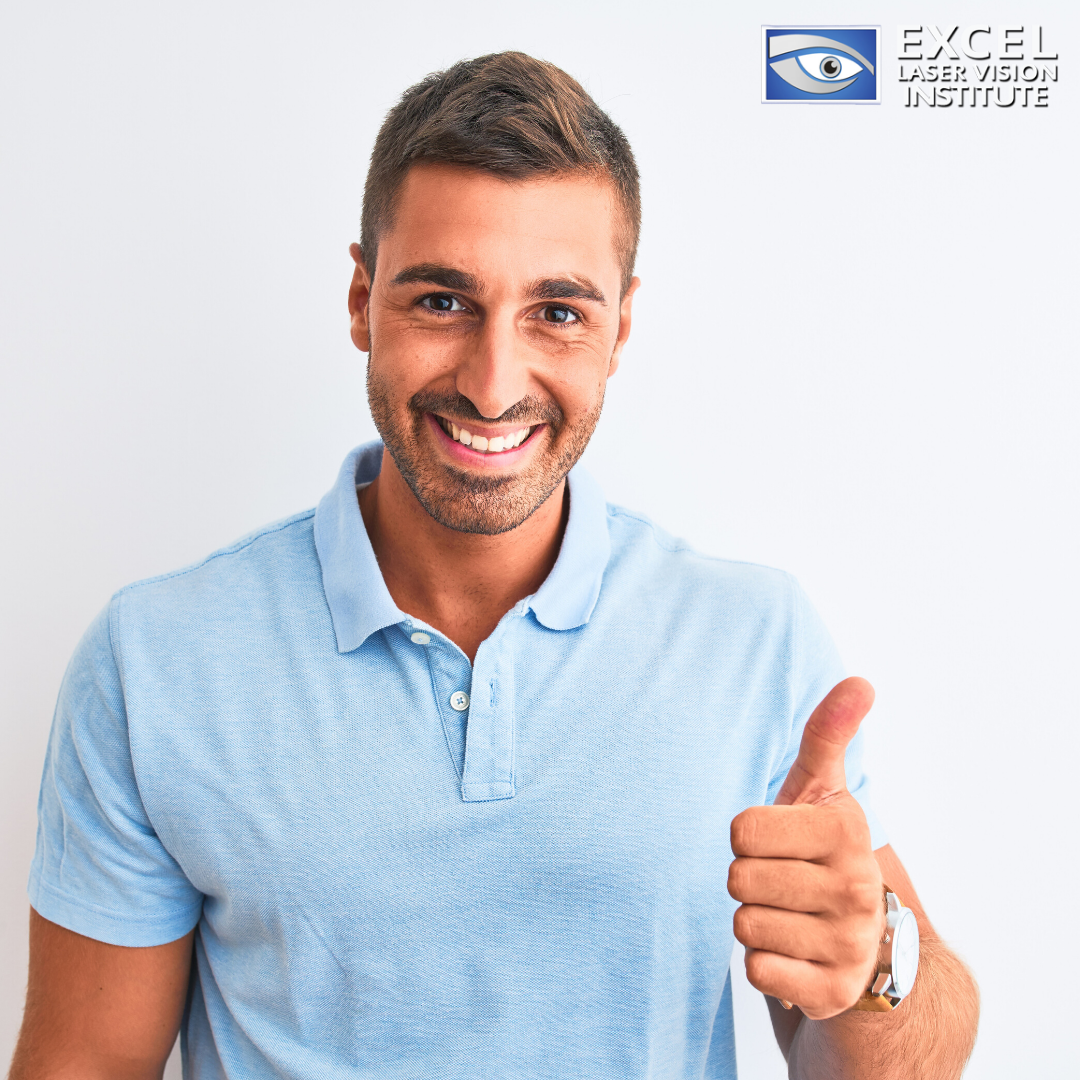
How LASIK Works
Almost 20 years ago, the FDA approved LASIK surgery and it has not stopped being a hot topic for better vision. Even if you don’t know much about LASIK, you can probably hear yourself or others reference it in your daily life. It is the answer to improved vision through the help of a LASIK surgeon in Orange County.
However, even though you might think LASIK is the answer to your vision issues, it isn’t for everybody, and it does not fix every vision issue.

What Are The Basics Of LASIK Eye Surgery?
First of all, not many people know that LASIK is actually an acronym for laser in situ keratomileusis and is a two-step procedure.
A LASIK surgeon in Orange County would make a micron-thin, circular flap in the cornea, which is the surface of the eye. It does not take the surgeon long to do this, roughly a few seconds and then he or she uses either a microkeratome or a femtosecond laser.
Afterward, the surgeon slowly lifts the flap and then the actual vision correction treatment will take place, which is just under the surface of the eye.
During the second step, a surgeon of LASIK in Orange County uses a computer-guided excimer laser to permanently remove the microscopic pieces of tissue which are causing the patient’s vision issues.
Then the flap is put back in place to act as a natural bandage and protect the reshaped portion of the cornea while it heals.
Ever since the first LASIK eye surgery was approved by the FDA, over nineteen million LASIK procedures have been performed in the United States alone.
Furthermore, LASIK has acquired more than forty-five FDA approvals, treating myopia, hyperopia, presbyopia, hyperopia, presbyopia, astigmatism, and many other eye conditions.
Are Lasers Shot Into Your Eyes?
It sounds very sci-fi, but yes that is what happens and it is pretty neat! Before you start to freak out, you should know that lasers are a beam of light that move together within the same wavelength at various speeds. For instance, the femtosecond laser that is sometimes used to create the flap is an infrared laser that pulses at one quadrillionth of a second to create microscopic tissue disruptions inside the cornea. The excimer laser which is used to correct the patient’s vision is an ultraviolet beam with a pulse rate of up to 1000 Hz.
Nowadays, lasers are used in various types of surgeries because they are amazingly accurate. This is very important since people hear about LASIK “slicing” and “dicing” the eye. These descriptions are not really precise. The whole LASIK procedure happens completely within the layers of the cornea, and no other part of the eye is involved. This is achievable because lasers can be used safely without harming the surrounding tissues.
Is It Painful?
You do not need to worry about pain because LASIK is typically painless! Numbing drops are used to anesthetize the eye before and during the procedure of a LASIK surgeon in Orange County. Normally, patients feel some pressure from the eyelid holder that the surgeon uses to prevent blinking, but other than that patients are made comfortable with the numbing and lubricating drops. After the procedure, some patients experience some mild discomfort that usually only lasts for about five hours.
Are You Awake During The Procedure?
Yes, and some people freak out about this, but you shouldn’t! Besides the numbing drops, your doctor can give you a sedative to help you stay calm. Also, the fact that you are awake does not harm you in any way. If your eye moves, the laser’s tracking capabilities follow your eye. If you sneeze or move around too much, the laser is capable of switching off automatically when this happens.
Is LASIK safe?
This is the most asked question our eye surgeons get and it is a good one to ask. Over the years, LASIK has been the most research elective procedure. Over 7,000 clinical studies have been conducted and published about LASIK. As a result, there has been a massive amount of data supporting its safety and effectiveness.
Also, LASIK eye surgery has one of the highest patient satisfaction rates compared to any other elective procedure. On average it rates at over 96 percent.
A majority of LASIK patients remark on how their vision is way better than when they had to wear glasses before surgery.
In over 40 million procedures around the world, there has never been a case of blindness because of LASIK in anyone who is a healthy, suitable candidate.
Are There Side Effects?
It is common to experience some symptoms during the healing period after a LASIK procedure. At the end of the day, it is a surgical procedure even if it only took fifteen minutes. It is normal to have this recovery period and your eyes might feel a little dry, sensitive to light, or irritated while they heal. Let your doctor know about your symptoms during your post-LASIK visits.
A few patients experience side effects from LASIK which consist of night vision visual symptoms such as glare, halos, ghosting, starbursts, and dry eye. Normally, glare, halos, ghosting, and starbursts slowly go away by themselves over a period of a few weeks or months, maybe as long as a year. Some patients may need extra courses of eye drops to lower the inflammation and/or dry eye that can cause visual symptoms.
In rare circumstances, less than five percent of the time, additional LASIK treatment may be recommended to fix residual vision issues or you can wear thinner glasses or contact lenses.
Who Can Have LASIK Eye Surgery?
If you have thin or irregular corneas or suffer from a certain eye disease such as glaucoma, your eye surgeon will probably inform you that you are unsuitable for LASIK.
Some autoimmune diseases such as lupus or rheumatoid arthritis, and medications such as corticosteroids, can impair the healing process and are not ideal for certain laser correction vision procedures.
If you want more information about LASIK, do not hesitate to give Excel Laser Vision Institute a call at (818) 907-8606, or fill out our contact form today!

